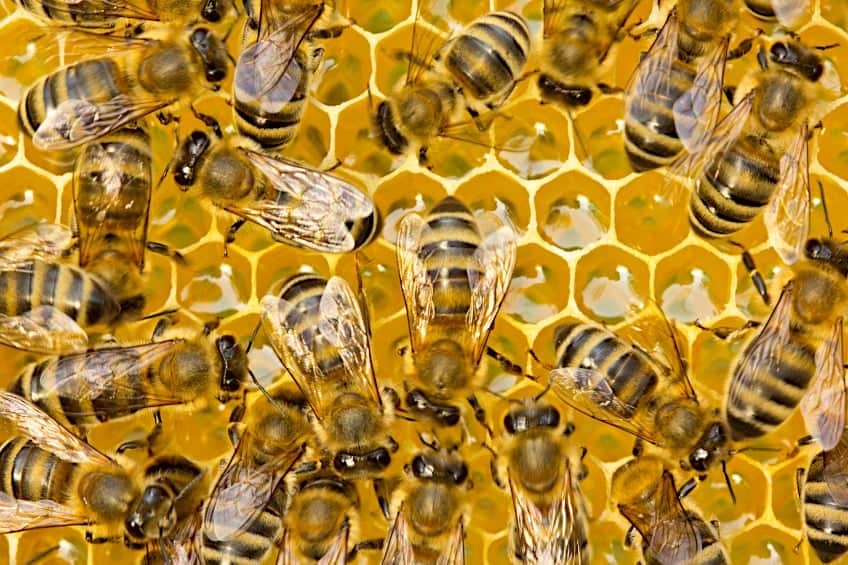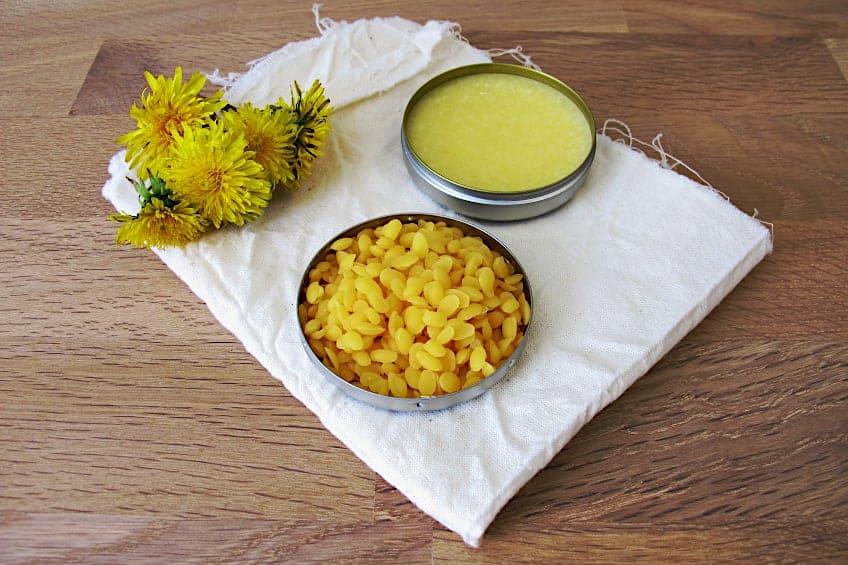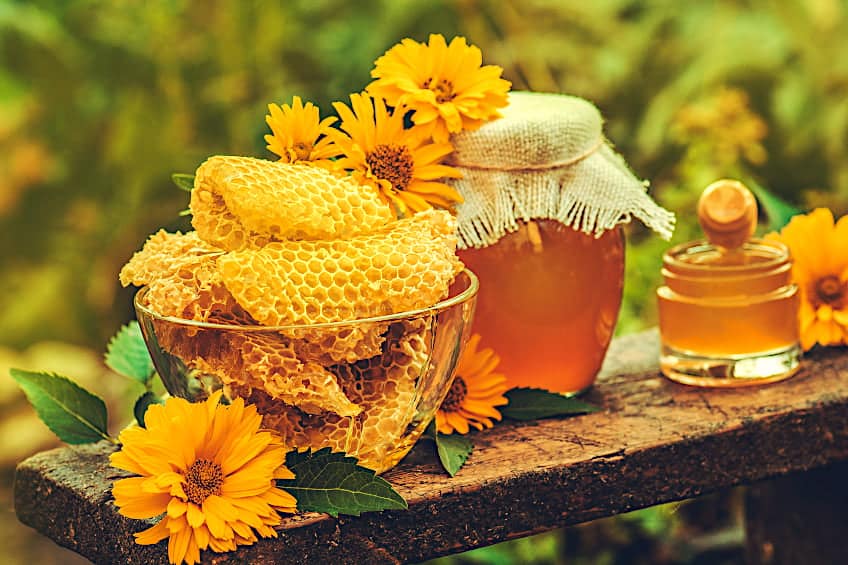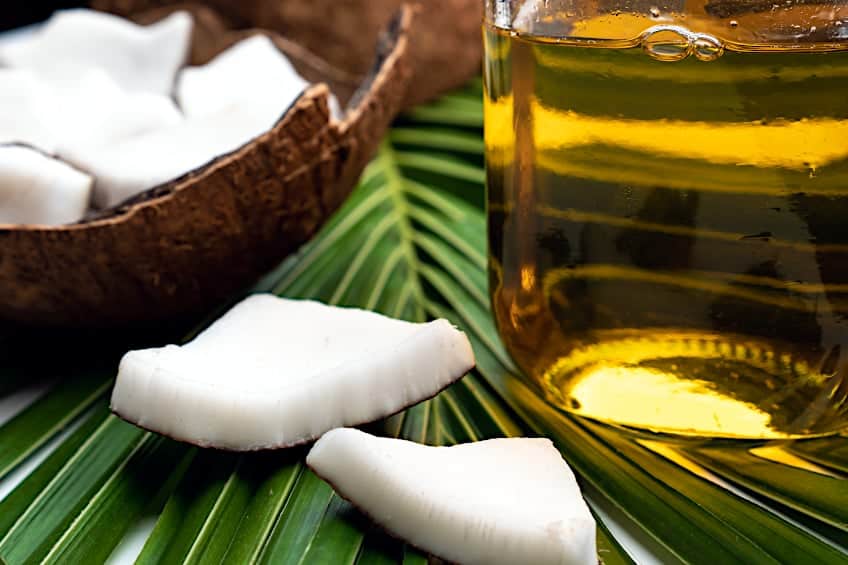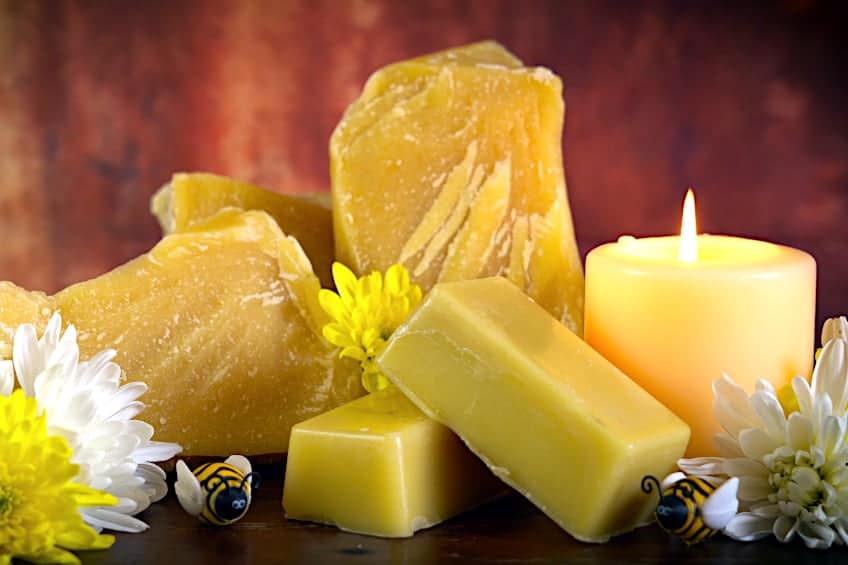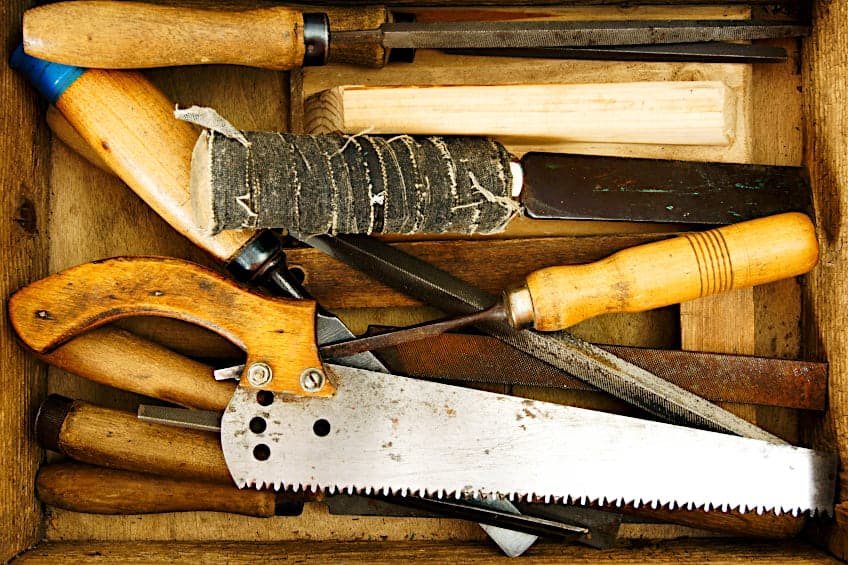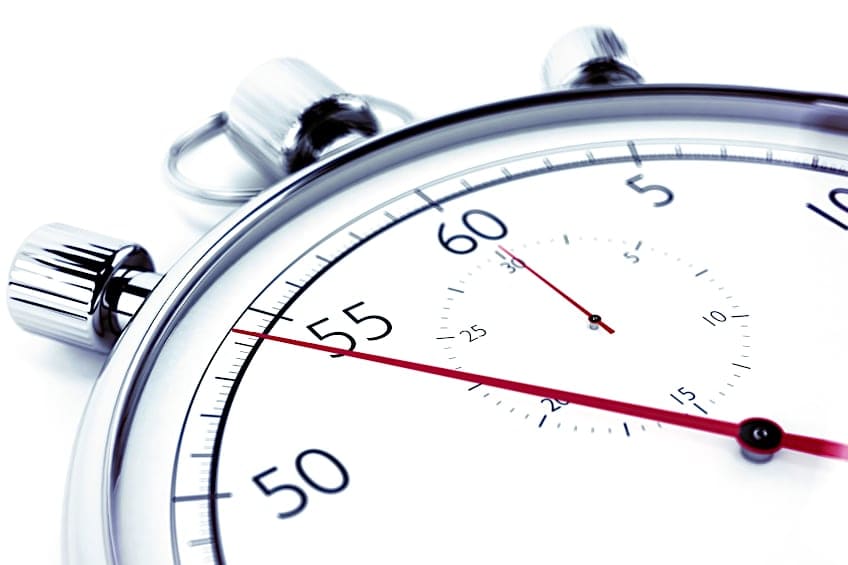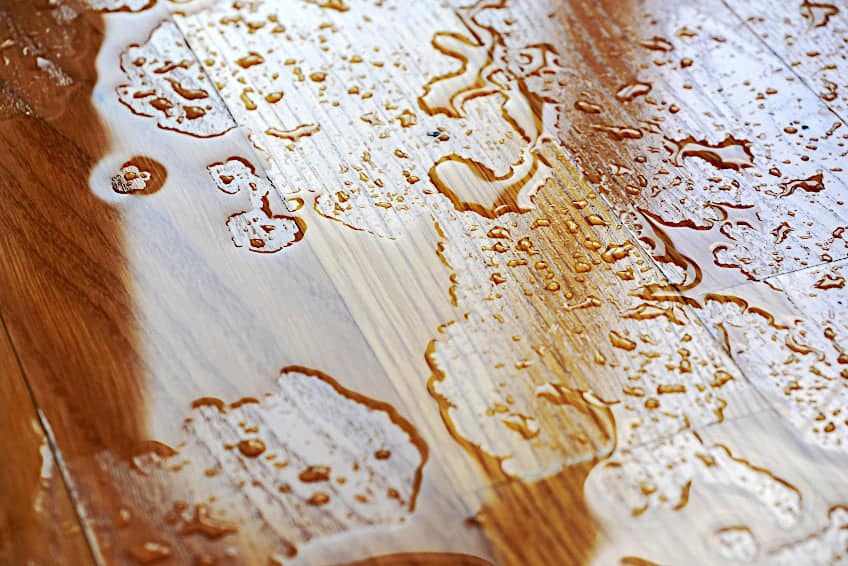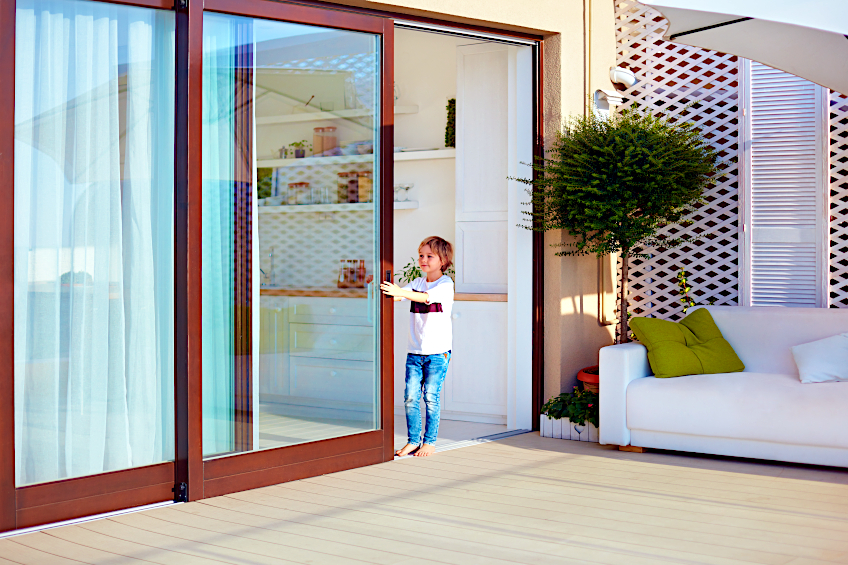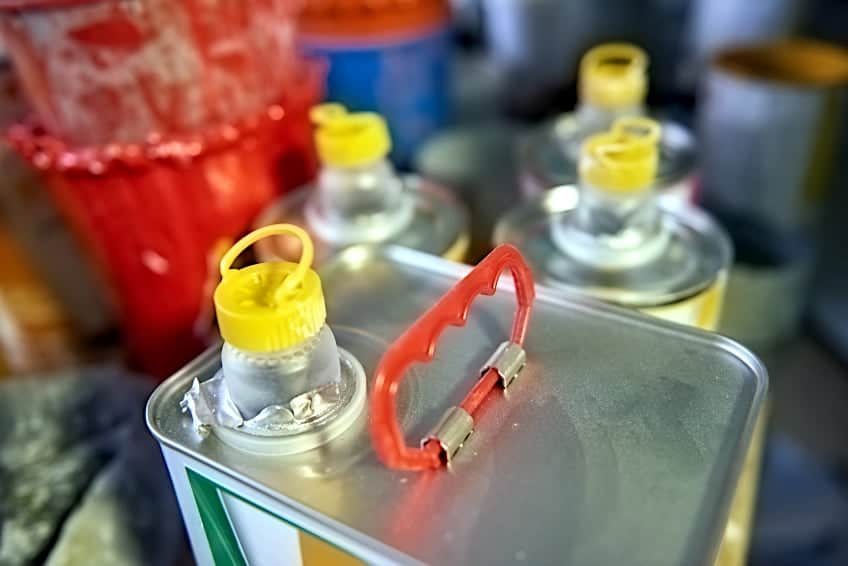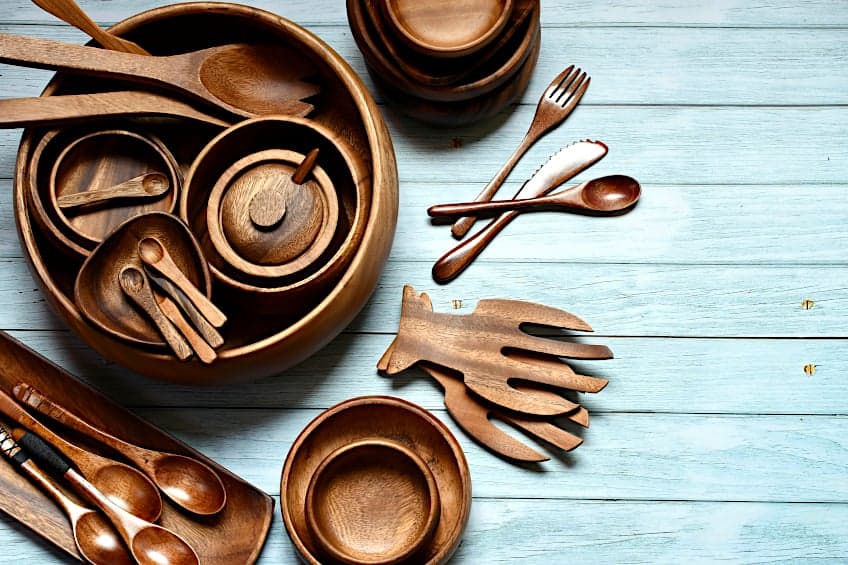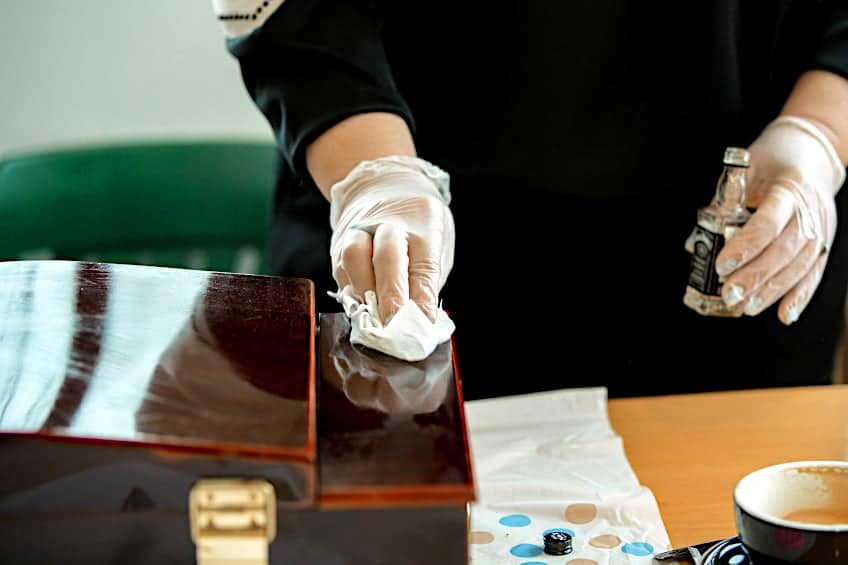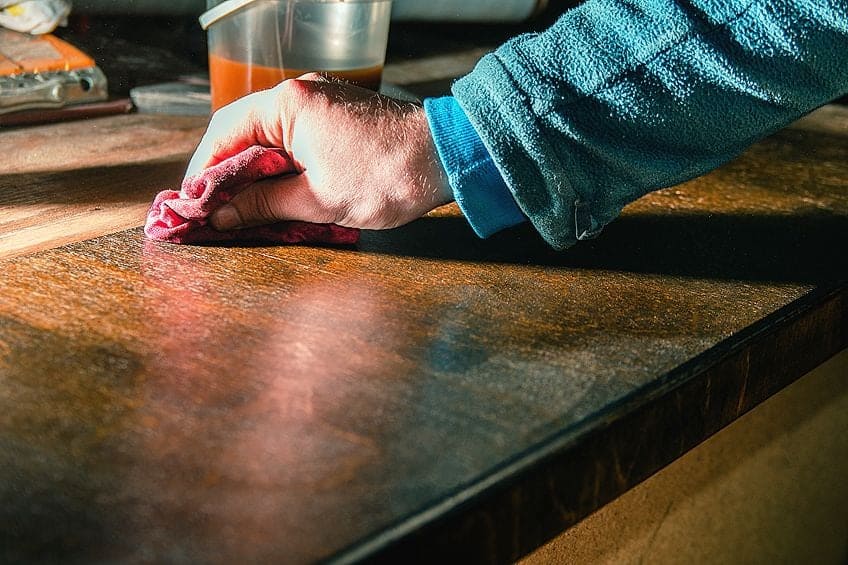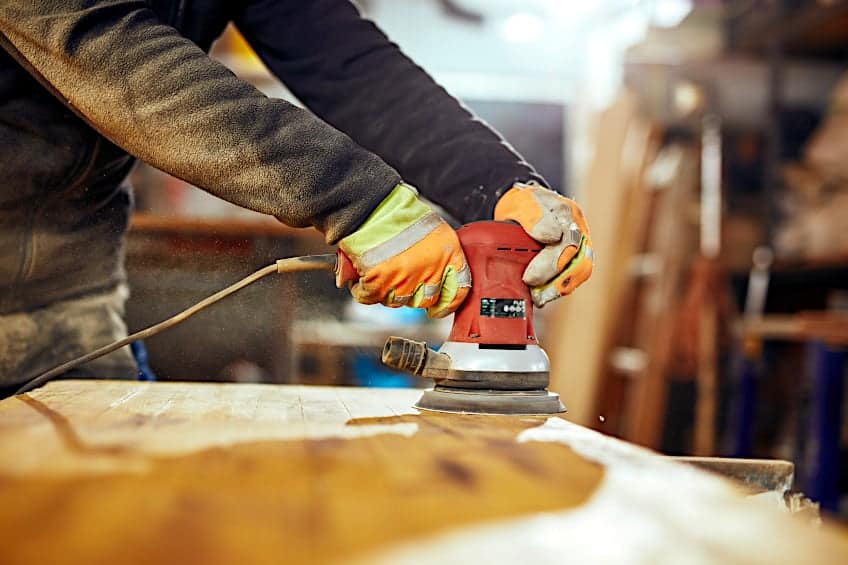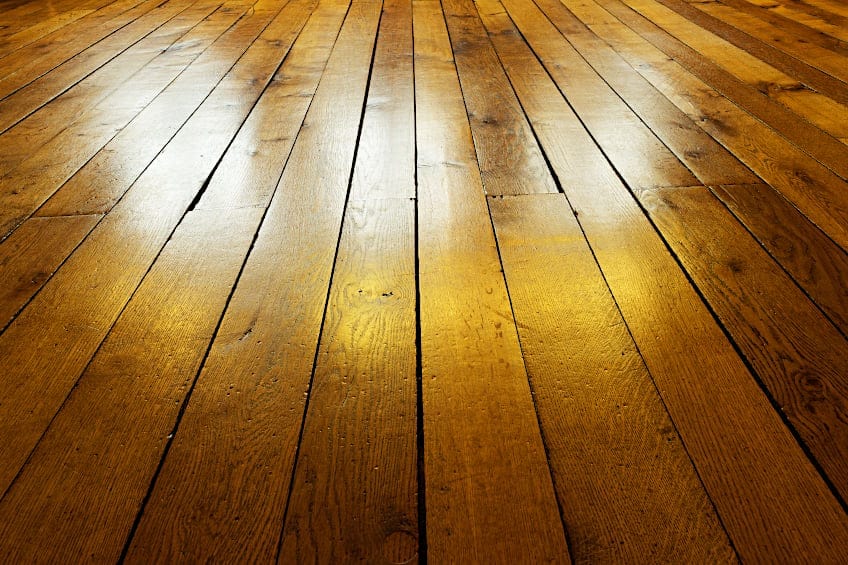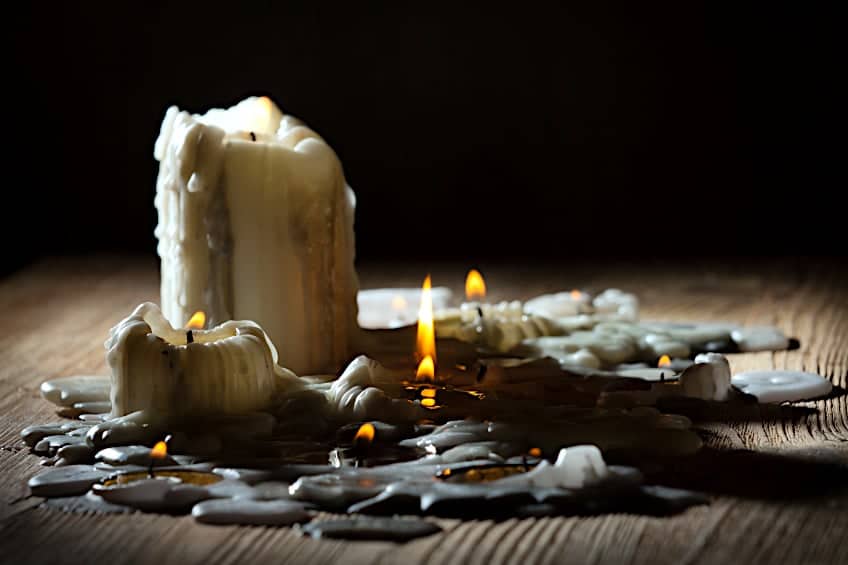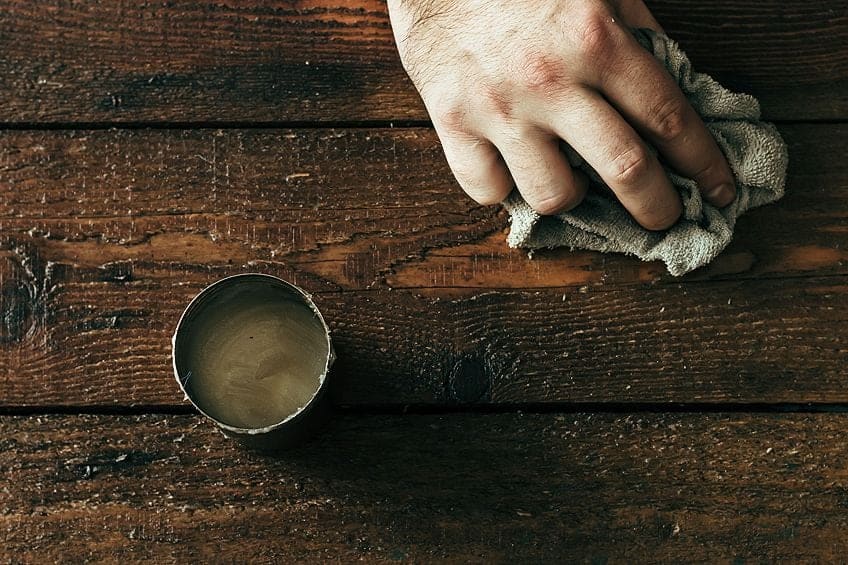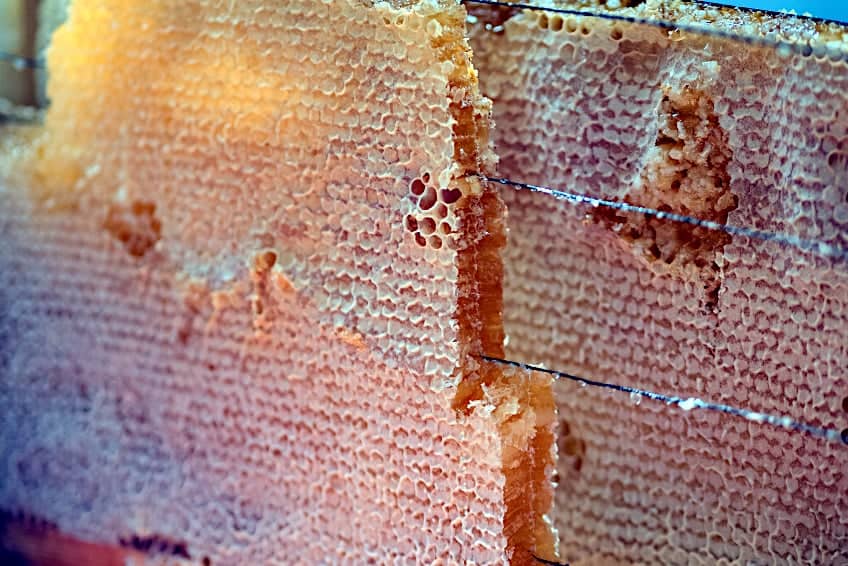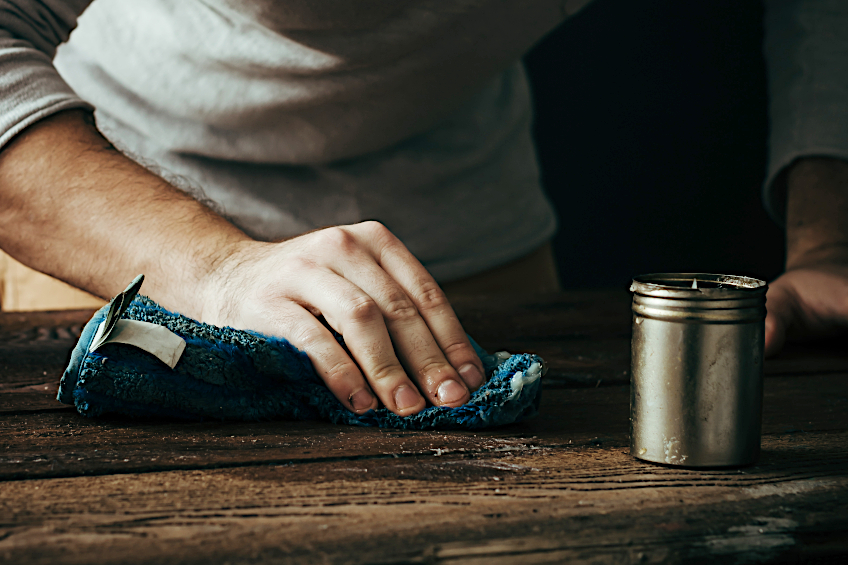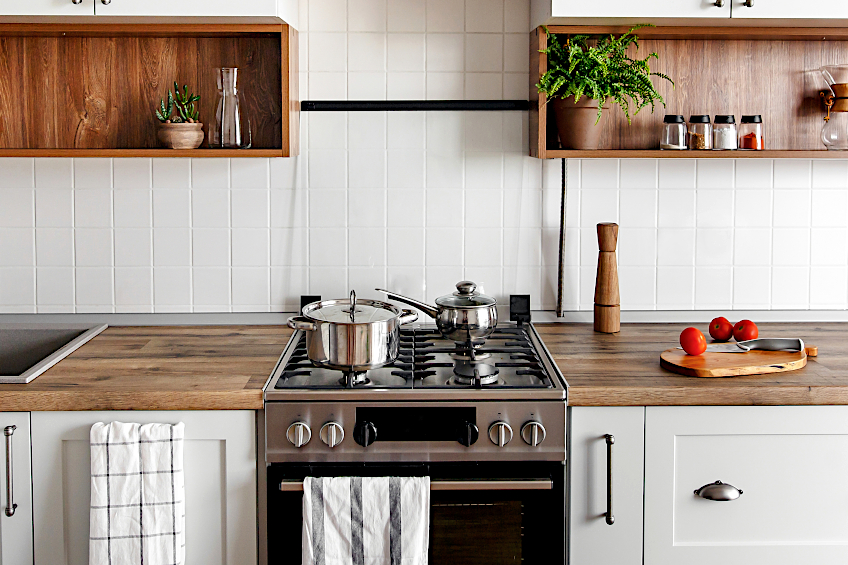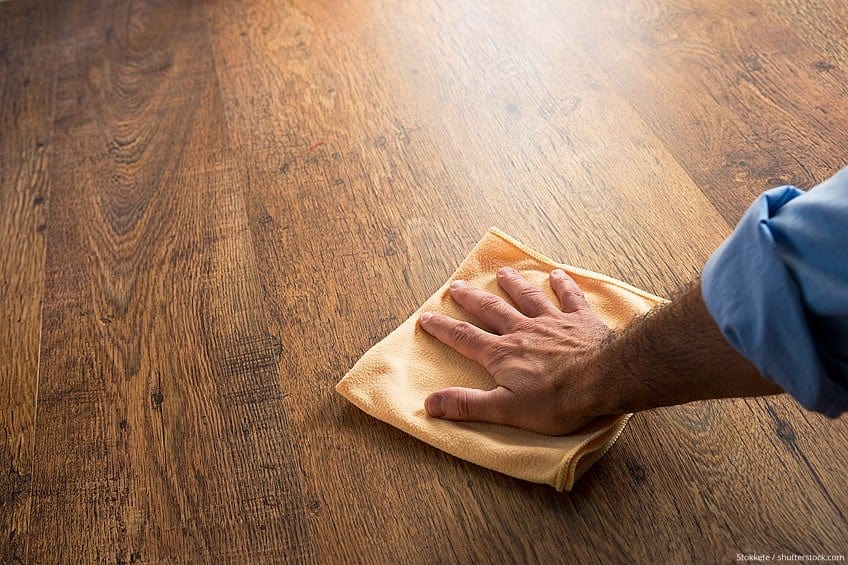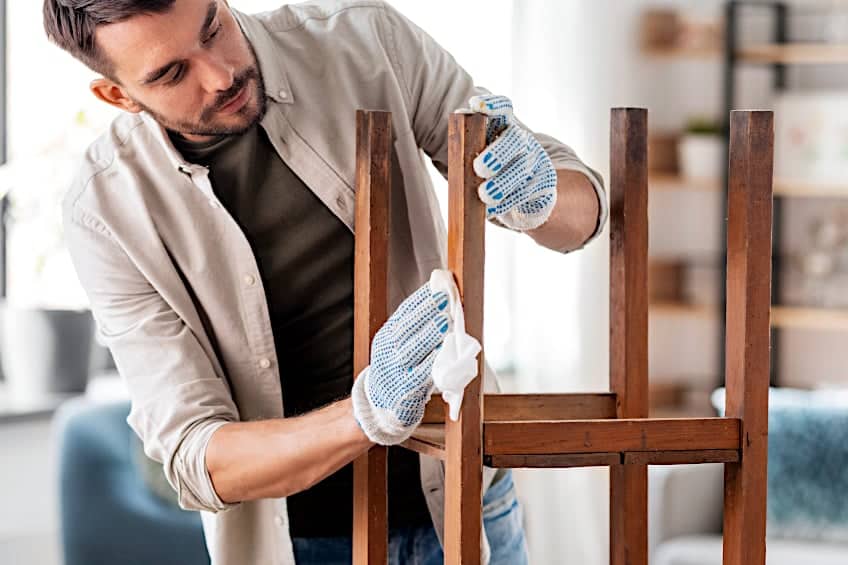Beeswax for Wood – Why and How to Use Beeswax on Timber
This post may contain affiliate links. We may earn a small commission from purchases made through them, at no additional cost to you. You help to support resin-expert.com
When choosing a finish for your wooden workpiece, there are loads of factors to consider. Do you want your workpiece to have a sheen finish? How durable do you need your finish to be? How much time do you have to apply your finish? Will your workpiece be situated indoors or outdoors? Does your finish need to be safe for animals and little humans? These are just a few of the questions you might find yourself asking, so what are your options when it comes to choosing a good finish? Well, you could choose something like tung or linseed oil, which are both great choices and offer a host of characteristics, such as protecting and beautifying your workpiece. Alternatively, you could choose something a little less common like beeswax, which people have been using since the inception of wood-crafting, and see what all the buzz is about. So, why don’t we have a look at what beeswax is, what it’s used for, how to use it, as well as some of the benefits it can offer your wooden workpiece?
Table of Contents
What Is Beeswax for Wood?
What is beeswax for wood? Beeswax is essentially a wood polish and/or wood treatment that has been used for thousands of years. Ever since we discovered the magic of honey, we’ve been figuring out how to use it to make our lives better, and along the way, we discovered that when beeswax is mixed with certain oils it makes for a great wood treatment oil, and it can be pretty tasty too (without the oils, though).
Beeswax is a natural wood finish that acts a lot like wood treatments oils do, providing a high-quality finish that highlights the natural beauty of any wood species it’s applied to. Like tung and linseed oil, beeswax does not obscure the wood grain and ensures that the texture of the wood grain is unaffected too, all while providing a sheen finish that is environmentally friendly and even smells great!
Its eco-friendly nature is one of the main reasons that beeswax is used as an alternative to more conventional wood finishes like varnish and wood stain. The latter often contains volatile organic compounds (VOCs), which aren’t only bad for the environment but your personal health too. This is why beeswax is a great choice of finish if you have little ones or animals in your home or workspace.
Beeswax wood treatment is pretty easy to make too and depending on what type of oil you mix with it can develop different properties. You can mix oils like coconut, walnut, natural tung, and even jojoba with your beeswax to make a great quality wood finish. Once you’ve mixed your beeswax with your oil of choice, all you need to do is leave it out in the sun to solidify for a while, and before you know it, your beeswax wood treatment will be ready to use.
What Is Beeswax Used For?
Although beeswax is most commonly used in the creation of wood treatment oils, it is used for a variety of other purposes too. Beeswax is commonly used in the manufacturing of cosmetic products like skin care creams too, where it is used to thicken, emulsify, and stiffen these products and provide other characteristics like moisturization and pore cleansing.
Beeswax doesn’t have to be mixed with other things to be useful either; you can use beeswax as a general lubricant too, or you could use it to make wax crafts like candles. This is actually a pretty fun hobby; so, if you’re looking for a fun pastime that you can also use to make gifts for your loved ones, why not give it a try?
If you’re not really into using beeswax to make candles, there are plenty of other things you can use it for. A good example is how you can use beeswax to create sustainable packaging for food items or just things in general. Beeswax can be combined with oils and cotton to make an environmentally friendly wrapping paper, which is a great alternative to plastic and other non-biodegradable packaging.
If you’re feeling artsy, beeswax can be used to create loads of cool works of art too, or if you’re looking for an alternative to store-bought crayons, you can make your own using a combination of beeswax and soap shavings. All that you need to do is pour your mixture into molds of your choosing and add some food coloring to set them apart from one another. In antiquity, marble sculptures and building were painted in vivid colors using a mixture of beeswax and pigments.
Not really into arts and crafts? That’s fine! Why not consider using beeswax to create your very own cosmetics? Beeswax can be used to make a wide variety of cosmetic products like lip balm and facemasks, and while this might seem a bit intimidating at first, it’s actually pretty easy if you have the right tools and get some adequate practice.
Not really into cosmetics? Well, we did mention that beeswax offers something for everyone. Beeswax can also be used as a lubricant to ensure that your tools are protected from the ravages of corrosion. Applying beeswax to the surface of metal tools insulates them from moisture, which is a great trick to keep up your sleeve if you live in a moisture-rich or particularly cold environment.
Are tools and cosmetics not really your thing either? Not to worry, there’s a beeswax application for everyone. Did you know that beeswax can be used on your hair too? You can use beeswax as a hair gel to tame little flyaway hairs, or as a natural styling agent for a night out on the town. It assists with hair growth too, so why not give it a try?
What Are the Pros and Cons of Using Beeswax on Wood?
While beeswax might be a versatile and environmentally friendly substance for a number of applications, it is by no means perfect. In the defense of beeswax, no substance is perfect, so let’s have a look at some of the advantages and disadvantages of using beeswax as a treatment for your wooden surfaces, which should enable you to decide if it’s the product for you.
Advantages of Beeswax Finishes on Wood
Beeswax has been around for a really long time, and different communities all over the world have taken advantage of its characteristics and abilities not only to treat wooden surfaces but to improve their quality of life overall. So, let’s have a look at a few of the advantages beeswax can offer you.
Fast Acting
One of the key selling points of beeswax is that it is one of the fastest-acting wood treatments around, which means that it’s great for all of your time-sensitive projects. It’s also really easy to use, which means you won’t have to go through lots of trial and error with scrap pieces of wood. If you have over or underapplied your beeswax errors are really easy to correct, which makes it the ideal wood treatment for beginners and kids.
Good for the Environment
We mentioned previously that beeswax is an eco-friendly alternative to some of the more conventional wood treatment products like varnish or wood stain. The aforementioned tend to contain VOCs, which aren’t good for the environment and aren’t safe to use indoors or around little ones, so beeswax is the ideal alternative to these.
Improves the Look of Wood
While wood treatments are designed to protect the wooden surfaces they are applied to, they are primarily used to improve the look of wood. Beeswax is one of the best ways to give your wooden workpieces a sleek, natural-looking finish that is also quite durable. Beeswax finishes tend to last for years, so it should come as no surprise that this finish is used on surfaces that are highly trafficked like kitchen cupboards, floors, and even furniture.
Completely Waterproof
Beeswax is also one of the few all-natural wood treatment products that are waterproof. While there are loads of wood treatments that are resistant to water, beeswax is one of the few wood treatments that is completely waterproof. This is why it is really popular in certain communities around the world, as it is more affordable, durable, and resistant to the effects of moisture compared to its synthetic counterparts.
Natural Lubricant
You don’t have to use beeswax as a protective coating or aesthetic treatment either. Beeswax can be used as an all-natural lubricant too, in fact, it is used in applications where wood-on-wood contact can cause friction and degradation to both surfaces. The beeswax keeps the contact between these frictionless, which is a great thing if you have wood panel sliding doors.
Relatively Easy to Remove
Beeswax isn’t just easy to apply to your workpiece either. It is pretty easy to get rid of any unwanted beeswax you have applied to your workpiece too. If you have overapplied beeswax on the surface of your workpiece all that you need to do is apply some solvent to the affected area and the beeswax will come right off. This is great considering that synthetic wood treatments often require the entire surface to be sanded and refinished.
Completely Edible
These characteristics make beeswax one of the best wood treatment products out there, but it has one characteristic among wood treatment products that sets it apart from the rest. Beeswax can be eaten, and it won’t give you an awful tummy ache either. Since beeswax is all-natural, ingesting it won’t cause any discomfort, which makes it a great food-safe coating for things like wooden coasters and/or serving trays.
Disadvantages of a Beeswax Finish on Wood
Are there disadvantages of a beeswax finishes on wood? We mentioned previously that although beeswax is an objective good wood treatment, it is by no means a perfect one. This being said, let’s have a look at a few of the notable disadvantages of using beeswax as a wood treatment for your workpieces.
Not Suitable for All Wood Types
While beeswax might be one of the more versatile substances out there, it cannot be used on any and all surfaces. For one, it cannot be used on surfaces that have an existing protective layer on them like linoleum or vinyl. Beeswax also cannot be used on surfaces that have not been prepared, which means that trying to use beeswax on surfaces that have not been planned or sanded is not an option.
Stains Wooden Surfaces
While this might be seen as a positive characteristic, it might not be if you intend on changing the finish of your workpiece in the foreseeable future. Beeswax penetrates deep into the surface of the wood and bonds with the wood fibers to create a protection that exists both internally and externally. This can be challenging to remove, especially if multiple coats of beeswax have been applied over the lifetime of the workpiece.
Challenging to Remove
Previously we mentioned that beeswax is pretty easy to remove from wooden surfaces if you simply use some solvent. However, if a beeswax finish has been part of the workpiece’s surface for a number of years, removing it can be problematic. This is because the finish has likely been maintained and reinforced over the years, so removing it can take some time and patience, which isn’t great if you’re on a schedule.
Low Durability Compared to Polyurethane
While synthetic substances like polyurethane aren’t as good for the environment as beeswax, they were developed for a reason. Beeswax is just that, a wax. Polyurethane is a fully synthetic liquid plastic coating that can outlast the surface it’s been tasked with protecting in most instances. Beeswax on the other hand needs to be maintained regularly and is nowhere near as hard-wearing as polyurethane is, so it is not ideal for use on floors.
Susceptible To Heat Damage
One characteristic of beeswax that has forced it to fade into obscurity in certain parts of the world is the fact that it does not do well in high temperatures. After all, the wax tends to melt when exposed to open flames and directed heat, so beeswax might not be the best option if your local climate tends to reach above 65 degrees Fahrenheit (18.33 degrees Celsius) regularly. The last thing that you want is to discover that your tabletop has melted in the afternoon heat.
Finish Can Yellow Over Time
Another one of the noticeable disadvantages of using beeswax as your wood treatment of choice is that it tends to yellow over time. While this change in hue is not immediately noticeable at first it can be off-putting when it is. This is why in some instances it’s best to go with other natural wood treatments like tung and/or linseed oil.
Requires Regular Maintenance
Finishing wood with beeswax is easy enough, but owning furniture that has been coated with this substance can get annoying pretty quickly if you aren’t the kind of person that enjoys upkeep. Beeswax finishes need to be polished and re-applied frequently to ensure that they retain that finish, so we wouldn’t recommend using beeswax on surfaces that are highly trafficked if you intend on keeping maintenance to a minimum.
Difficult to Apply
Beeswax wood finish isn’t really difficult to apply, but it can take some elbow grease. Where tung and linseed oil simply need to be rubbed in with a cloth, beeswax might need to be rubbed in a bit more. This is immediately apparent when you attempt to apply beeswax to large surfaces like full-sized dinner tables or flooring, which can have you rubbing back and forth for hours on end.
- Fast acting
- Good for the environment
- Improves the look of wood
- Waterproof
- Easy to remove
- Food safe
- Not suitable for all wood species
- Stains the wood
- Challenging to remove
- Low durability
- Susceptible to heat damage
- Finish can yellow over time
- Requires maintenance
- Labor intensive application process
Commonly Asked Questions About Beeswax Finishes
While beeswax has been around for a fairly long time, the average DIY weekend warrior doesn’t know too much about it. This is likely due to more mainstream wood treatments being more popular, so we have decided to give you a crash course in some of the most commonly asked questions regarding beeswax as a wood treatment.
What Is the Difference Between Beeswax and Finishing Wax?
As the name suggests, finishing wax is a type of wax that will be applied to a wooden workpiece after beeswax has been applied. Think of this as a polishing solution to ensure that your wooden surface has that coveted shine to it. Finishing wax also offers an additional layer of protection to both your workpiece and the beeswax, which reduces maintenance and increases durability.
Finishing wood with beeswax typically makes wood a bit softer, and even though your workpiece will look great it’s not good for the durability of the surface. This is why finishing wax is applied to sort of solidify the treatment and give it a solid texture once more. Finishing wax is easy to apply, although you should allow your beeswax to set before using it.
What Does Waxing Do to Wooden Surfaces?
Wondering what waxing does to wooden surfaces? Well, Beeswax wood polish was initially designed primarily as means of protecting wooden surfaces from things like impact, abrasion, moisture, ambient heat, and even insects. When applied to wood, beeswax creates a coating that eventually hardens to create the aforementioned protective layer. It doesn’t stop there though, beeswax then seeps deep into the fibers of the wood and bonds with it, to ensure both interior and exterior protection.
Besides providing protection for your furniture, beeswax wood polish also improves the look of your furniture. It highlights the natural color of the wood species being treated, often creating a sheen coat that emphasizes the light and dark contrast in the wood grain. This makes for a unique finish that is exceedingly challenging to achieve with other wood.
How Long Does Beeswax Last?
How long does beeswax last? This depends on where you have chosen to use your beeswax as a wood treatment. As we mentioned previously beeswax needs to be maintained far more regularly than most other wood treatments, and this is especially true if you’re using it on a surface that is highly trafficked.
If your workpiece only receives only moderate traffic your finish should last around three to five years, as long as you clean and maintain it fairly regularly. However, if your workpiece sees a lot of activity you can expect to replace your finish every two years or so, which isn’t great. This being said, always consider the application of your workpiece before committing to beeswax as a finish.
Does Beeswax Make Wood Slippery?
Does a beeswax wood finish make wood slippery? In a way, yes it does. Previously we mentioned that beeswax tends to give wood a sheen finish, and this sheen finish can be pretty slippery. It’s for this reason that finishing wax is used in conjunction with beeswax, as not only does it protect the finish, but it also provides a bit more surface friction.
Is Varnish Better Than Beeswax?
This is a good question, but like most things in life, it depends on what you’re setting out to do. Since we’ve discussed beeswax, we know that it’s a relatively durable wood treatment that requires regular maintenance and doesn’t do too well with exposed flames or high foot traffic. This being said you wouldn’t use beeswax in these conditions, would you?
Well, the same can be said for varnish. Varnish is a highly durable wood treatment that sort of falls into the same vein as beeswax, only it doesn’t require as much maintenance and it has loads of VOCs in its composition. It’s not as good for the environment, isn’t food safe, and doesn’t provide quite the same quality of finish that beeswax does, so you wouldn’t use it for the same applications.
How to Use a Beeswax Finish on Wood
Using beeswax for furniture finishing can be a bit labor-intensive, but it’s not exactly rocket science. In fact, it can be loads of fun! Since beeswax is completely natural and doesn’t contain any VOCs, you rope the little ones in on your project too. So, without further ado, let’s have a look at how to apply beeswax to your furniture correctly.
Clean Your Workpiece
As with refinishing any wooden workpiece the best thing to do is to clean it off a bit before you get started. This applies to pretty much any surface you’re working with whether it has an existing finish like paint, varnish, or just plain old raw wood. Cleaning wood is pretty easy, all you need is a clean cloth and some soapy water to get started.
Ensure that you remove any dirt and grime present on the surface of the wood, or any loose bits of wood on the surface. Remember that beeswax is pretty thick in consistency so any dirt left on the surface will get mixed up with the wax when you apply it, essentially ruining your finish. Once you’re done cleaning your workpiece, allow it to dry completely before moving on to the next step in the process.
Apply Your Beeswax
As you can see, there isn’t an awful lot of preparation involved in applying beeswax to wood. Once you’re sure that your workpiece is nice and clean, get your beeswax ready along with a clean cloth that won’t leave behind any fluff on the surface of your workpiece. Got your cloth? Good. Get two full fingers full on your cloth and get to rubbing it onto the surface of your workpiece.
The best way to go about applying beeswax to wood is to do it in a circular motion. You can start from one corner of your workpiece and work your way to the center, and then to the next corner. Or, you could start from the center of your workpiece and work your way out towards the edges. Whichever method you choose to use, ensure you apply adequate pressure when applying your beeswax to ensure it gets all the way into the wood fibers.
Buff Your Workpiece
Once you’ve got what is sure to be a full-body workout in applying your beeswax, allow it to set in for a bit. This should take around 15 minutes, which means you can take a well-deserved break after all the rubbing you just did. Once the beeswax has had a chance to set in, it’s time for you to get to buffing the surface of your workpiece.
Buffing is essentially polishing a surface to a deep shine. What you’ll want to do is get a clean cloth and rub up the surface of your workpiece, removing any excess beeswax from the surface and giving your workpiece a nice new shine. Once you’re done buffing your workpiece all that’s left to do is step back and admire the fruits of your labor.
Where Can You Find a Good Beeswax?
Wondering where you can find a good beeswax? Well, there are loads of places that sell different types of beeswax for different applications. There are loads of websites and physical locations that sell high quality and even homemade beeswax for all sorts of uses, but if you’re looking for a really high quality beeswax that happens to have a ton of positive reviews, why not try out this one from Amazon?
This beeswax can be used for pretty much anything you can think of, from wax candles, to surface coatings for wood. This beeswax is 100% natural and can even be used as an edible decoration for dinner parties! Beeswax can also be used as an intense moisturizing agent for your skin, so get creative and explore all the applications of beeswax.
Now that you know what beeswax is, where it comes from, how to use it, some of the pros and cons associated with it, as well as answers to some commonly asked questions about it, why not give it a go for yourself? Beeswax might not be the perfect wood treatment, but it produces an entirely unique finish that can really set your furniture apart, and it’s pretty good for the environment too!
Frequently Asked Questions
What Are the Disadvantages of Beeswax Finish?
Using beeswax for furniture has its advantages and disadvantages. One of the main advantages of using beeswax on your furniture is that it doesn’t have any VOCs present in its composition. Some of the key disadvantages are that it requires regular maintenance, and it can be physically challenging to remove.
Can You Make Your Own Beeswax?
Wondering if you can make your own beeswax wood treatment? You can! All you need to do is melt some beeswax in a two-part boiler and add some mineral oil to it. Once the mixture has been boiled together simply pour the bees wax into a storage container for later use.
Where Can You Get Beeswax?
It is possible to buy beeswax in ready-to-use form. There are loads of craft and herbal remedy stores that sell beeswax in block form for you to melt down and repurpose.


